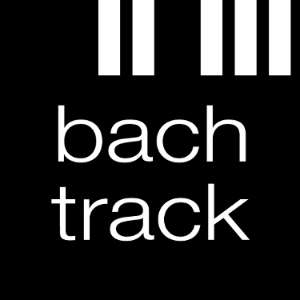Some people crack open the Champagne to launch the New Year, but here at Bachtrack Towers the corks have barely popped before we dive into the classical music statistics for the year just ended. Since its creation in 2008, Bachtrack has grown into the largest classical listings site in the world. Last year, we listed over 32,000 performances of classical concerts, opera and dance across the globe – nearly 5,000 more than in 2015 – so our statistics are the truest reflection of the international scene possible.
You can read the full infographic here.
Ever since 2010, since we’ve been collating our annual statistics, the No.1 spot for most-performed concert composer has swapped between Mozart and Beethoven. This year, the crown returns to Ludwig, with 3,341 performances listed, with his Fifth Symphony retaining its place as the most-played work in concert halls. One reason for the ‘Beethoven Boost’ has been the large increase in the number of our listings in Japan. As Paavo Järvi told us in October, “There is no doubt what the centre of classical music is for the Japanese: everything Germanic.” The proportion of music from the Romantic era is far greater in Asian listings than in other parts of the world with well over 60% of concerts containing repertoire from the 19th century (and comparatively little Baroque).
As the numbers increase, our listings become less UK-centric and Baroque composers such as Handel slip a little in the performance stakes. Handel’s Messiah, for instance, topped the charts for most-performed work until 2015, when it slipped to No.2, but fell all the way to No.9 in 2016. Handel is the 13th most-performed composer, his first time outside the top ten. Tchaikovsky’s Violin Concerto enjoys a significant peak, entering the top 20 for the first time to reach No.3 in the most performed works.
Composers celebrating a significant anniversary obviously enjoy a bump up the charts… but only a temporary one. In 2015, Sibelius rode high as the ninth most-performed composer, 150 years after his birth, but last year he slid back to his usual spot in the late-20s. Riding the crest of their anniversary waves, 2016 was a good year for Dutilleux, Reger, Ginastera and Satie.
As well as composers, we can also monitor classical performers. Whirlwind maestro Valery Gergiev easily topped our stats as the busiest conductor (143 performances) now that we list far more Mariinsky events. Daniil Trifonov was first in the pianist rankings and, once again, the New York Philharmonic Orchestra had the most concerts listed.
In the opera house, there was little change in the composer rankings, with Mozart, Verdi and Puccini each topping 1,000 performances each with room to spare. The Magic Flute (Die Zauberflöte) was the most-performed opera, pipping The Marriage of Figaro by a single show! Over the past five years, operas such as Norma have risen steadily up the charts – testament both to a number of new productions and the sopranos prepared to take this challenging work into their repertory. Composer Umberto Giordano is enjoying a surge in popularity… and not just because of Andrea Chénier. We reviewed two performances of Fedora last year, as well as a rarity served up at La Scala, La cena delle beffe (The Jesters' Supper). With a huge 305 performances on Bachtrack, Hungarian State Opera was the busiest company, even ahead of the Mariinsky.
On the dance front, Tchaikovsky’s music still dominates the ballet genre. The Nutcracker remains the most performed work with 446 performances listed. Swan Lake comes second, Sleeping Beauty fifth. Prokofiev’s beloved Romeo and Juliet was ranked third, with 140 performances programmed during Shakespeare 400.
After Petipa, it’s George Balanchine’s works that were the most performed in 2016. Interestingly, New York City Ballet – home of the choreographer – has been the busiest company this year (with 174 performances). With a larger database than ever before, we’ve recorded 525 performances of Balanchine’s works, suggesting a surge in popularity and strong interest in his legacy both from artistic directors and audiences worldwide.
Another clear trend emerging from our annual stats is the success of contemporary ballet, which has gained momentum in the last few years, new commissions reviving an art some feared under threat. Amongst contemporary masters, Alexei Ratmansky and Christopher Wheeldon lead the way with 153 and 150 performances respectively. Behind, Justin Peck, Edward Clug, JC Maillot and Benjamin Millepied are making their marks alongside established figures of the neoclassical genre.
The year was also tempered by a debate around (the lack of) women choreographers. Three modern artists stand out in our top 30 of choreographers: Twyla Tharp, Sol León and Crystal Pite.
What time of the day do you enjoy attending concerts?
If you’re UK-based, the chances are most performances start at 7:30pm, more likely to be up to an hour later in the rest of Europe. But in Asia, we found that 28% of the concerts listed start between 2 - 5 pm, as against just 8% of concerts being scheduled at this time in Europe and around the same percentage taking place between 5-7pm.. A source from Tokyo’s Suntory Hall has confirmed that its afternoon weekend concerts even sell slightly better than evening concerts (84% versus 80%). Could this popularity spread? In London, there are very few Sunday matinees (mostly the Philharmonia) at present. With Sir Simon Rattle taking the reins at the London Symphony Orchestra in September, might we see more innovative scheduling in terms of times at which our concerts take place?




